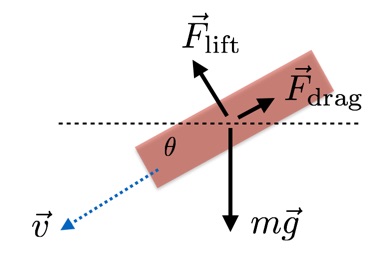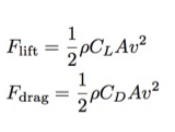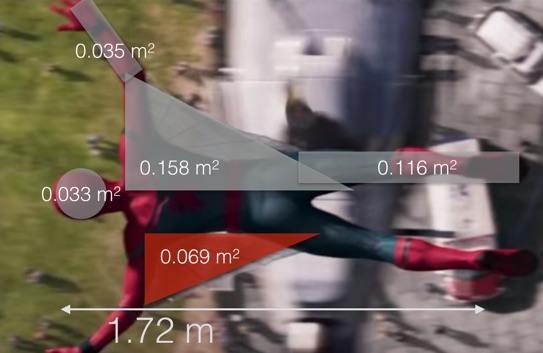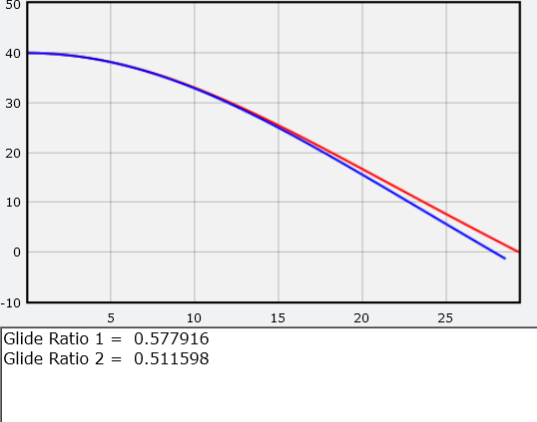Physics of Spiderman with his new spider wings
I will not lie, I'm really looking forward to the movie "Spiderman: Homecoming" [Spider-Man: Homecoming]. In the meantime, the only outlet for me will be to do the physics of Spider-Man. And I will deal with his new spider wings, seen in the last trailer.
For fans, I note that in some of the original comic books about Spider-Man it was really shown how he uses them, although he did not always use them for flying.
')
Planning physics
What happens after the Spider-Man jumps off the building? I can simulate his movement, assuming that he has three forces - gravity, air resistance and lifting force. With your permission, I will describe each of them.
• Gravity is a constant downward force proportional to the mass of an emergency (on the surface of the Earth, at least).
• Resistance. Imagine pulling an object through a gigantic sea of ping-pong balls. Replace the balloons with air - and it will be about the same. Resistance increases with speed.
• Lifting force. Again, imagine collisions with balls, but those after which the balls bounce down. By replacing the balloons with air, you will get a lift force depending on the angle of attack, surface and speed.
Here is a beautiful diagram of the forces planning on the wings of an emergency. Yes, as long as we model it with a triangle.

In our simple model, the lift is perpendicular to speed, and the resistance is directed in the opposite direction. To simulate the movement of an emergency with wings, I need a formula for both of them.

These are the magnitudes of our important forces They are similar, except for C L (lifting coefficient) and C D (drag coefficient). In both cases, ρ is the density of air (1.2 kg / m 3 ), and v is the speed.
What is A? This is the cross-sectional area of a person (PE in our case). In theory, A for resistance and for lift should be different, depending on the angle of attack. But I don’t always know exactly what I’m doing — that's why I checked various sources, and the 2011 article The Trajectory of the Falling Batman from the physical journal Journal of Physics Special Topics is most suitable for me. In it, the authors used the same area for resistance and lift, so I’ll do the same.
Trajectory simulation
If a state of emergency jumps off a building, how far can it shift in a fall? What difference will spider wings give him? Modeling the movement of emergency is not so easy, because the resistance and lift force depend on the speed. Such a trajectory can be calculated only when using a numerical model in which the movement is divided into small steps.
Let's do the approximation. First, calculate the surface area of an emergency. Roughly prikinuv, I received:

What gives us an area of about 0.651 m 2 with wings and 0.513 m 2 without them. The remaining values are:
• Lift factor = 1.45 (value taken from the work of Batman)
• Coefficient of resistance = 0.4 (from the same place)
• Mass = 64 kg
• Initial speed = 8 m / s (horizontal)
• And one more assumption: a constant angle of attack, in connection with which the coefficients of resistance and rise do not change.
Without hesitation, I jumped into the world of numerical models. I left comments in the code so that you could remake it for use as homework.
GlowScript 2.1 VPython #this is the area with the wings A1=0.651 #area without wings A2=0.513 g=vector(0,-9.8,0) m=64 #mass of Spider-Man CL=1.45 #coefficient of lift CD=0.4 #coefficient of drag rho=1.2 #density of air #starting velocity #try changning this v0=8 #starting momentum assuming horizontal - change this p=vector(v0,0,0)*m #p2 is just the momentum for the comparison p2=p t=0 dt=0.01 #starting height h=40 #starting position r=vector(0,h,0) r2=r #these are for the graphs f1=series(color=color.red) f2=series(color=color.blue) while ry>0: #calculate the velocity to use in lift-drag v=p/m v2=p2/m #calculate the drag force Fd=-.5*rho*A1*CD*(mag(v)**2)*norm(v) Fd2=-.5*rho*A2*CD*(mag(v2)**2)*norm(v2) #calculate lift (notice cross product to get direction) FL=-.5*rho*A1*CL*(mag(v)**2)*cross(norm(v),vector(0,0,1)) FL2=-.5*rho*A2*CL*(mag(v2)**2)*cross(norm(v2),vector(0,0,1)) #total force F=m*g+Fd+FL F2=m*g+Fd2+FL2 #update momentum p=p+F*dt p2=p2+F2*dt #update position r=r+p*dt/m r2=r2+p2*dt/m #update time t=t+dt #plot stuff #change this if it makes you happy f1.plot(rx,ry) f2.plot(r2.x,r2.y) print("Glide Ratio 1 = ",-px/py) print("Glide Ratio 2 = ", -p2.x/p2.y) 
In my model, the red line represents the state of emergency trajectory with wings, and the blue line - without wings. I also derive the value of aerodynamic quality. Since at the end it moves at a constant speed, this ratio will simply equal the ratio of the x-component of the pulse divided by the y-component.
Home work
To answer the following questions, use this numerical model . Do not worry, you will not break anything. If you do something with the code, just reload and start over.
• According to Wikipedia , a jumper wearing a winged suit has aerodynamic quality (the ratio of lift to frontal resistance) is about 2.5: 1 (that is, our program would output the number 2.5). Can you fix the code in such a way that the program produces such a value? Hint: change both the surface area and the initial speed.
• What if a state of emergency falls vertically down? What is the maximum speed he will gain with wings, and without them?
• How fast should an emergency move horizontally so that it flies up, not down, at the beginning of the flight?
• Can a state of emergency jump, aiming down, so as to gain greater speed and for some time to go into horizontal flight?
• Can you build an improved model that takes the angle of attack into account? Perhaps you can, but it seems to me that flying at low speed is a rather complicated topic.
Source: https://habr.com/ru/post/399957/
All Articles